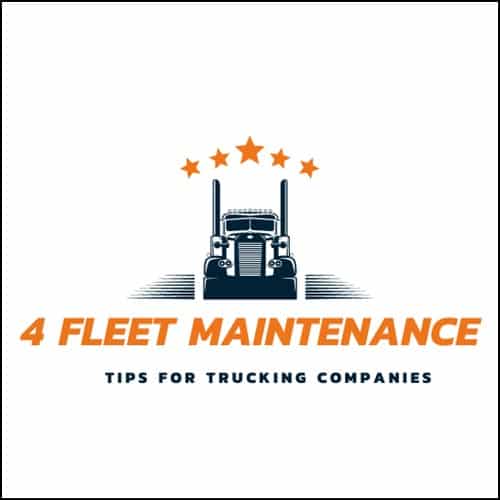Running a trucking company is a profitable pursuit, but it’s also one where more hard work is necessary. It’s a must to ensure you can maintain and run your fleet effectively if you consistently want to have the best results for your business. Fleet managers have a lot on their hands, from simple tasks like daily inspections to bigger ones like undergoing the necessary maintenance and repairs.
Your trucking company may not be as efficient as you hoped for if proper fleet maintenance is not performed. It’s not just time wasted but also potentially company resources. In an industry like logistics and trucking that’s so fast-paced and one with so much competition, team managers have to be on top of fleet maintenance to avoid some of the mishaps that may occur – literally and figuratively.
So, what are some of the best fleet maintenance tips for you to manage and run your fleet of trucks more efficiently? Here’s a run-through.
1 . Start Right From The Top
First and foremost, always return to the very beginning of identifying who is responsible for whom. Fleet management can never be done successfully and effectively without well-defined responsibilities. Managers, for instance, need to know where they’re accountable and whom they should be looking out for.
Remember that fleet managers are responsible for recruiting drivers, maintaining the vehicles, undergoing preventive maintenance, and making strategic financial decisions. Without a consistent methodology for everyone to follow, there will be very little to no sense of order.
When you start from the top, employees also know whom they should turn to if they’ve any concerns. Moreover, there’s a well-defined plan or strategic implementation of what should be done – and not done – to complete their assignments.
2 . Implement A GPS Vehicle Tracking System
A GPS vehicle tracking system is a key component of good fleet management. This goes back to the very premise of what a GPS vehicle tracking system does.
When you have one, it’s easy for the fleet managers in the office to have data on the location, position, and whereabouts of a particular truck. You can easily monitor whether or not a driver followed the shortest, safest, and cheapest route or if they diverted. Moreover, in case of any truck accident or road rescue instances, you know where the precise location is.
Having a GPS vehicle tracking system ensures deliveries are made on time and on schedule. Moreover, drivers have very little leeway to try and cheat through fuel costs, for instance, by saying they’ve traveled a certain distance when they haven’t.
3 . Prevent All Sorts Of Downtime
Downtime can happen in a business in two main ways: planned and unplanned. Here’s a distinction between both:
Planned Downtime
This happens when a fleet vehicle is out of order for scheduled maintenance. Because they’re planned, the losses that occur during those maintenance periods can be factored into the business’ operating expenses. Because of that, fleet managers actually have an opportunity to reschedule the deliveries or implement a backup plan while the vehicle currently isn’t functional.
Unplanned Downtime
This refers to sudden and unscheduled interruptions in productivity due to unforeseen accidents and maintenance issues.
Whatever the type of downtime your business experiences, there’s no denying how it can cause a significant blow to the business’ resources. Moreover, productivity is also just as affected as the budget is.
The primary strategy to prevent all sorts of downtime is to apply pre-planning of maintenance schedules. This proactive approach can ensure your team stays in the loop with necessary fleet maintenance before even bigger and more costly issues ensue.
4. Create Policies And Procedures That Team Members Must Follow
It’s a must for your company to have policies and procedures for your fleet if you want the management to be as smooth-sailing as possible. Once the procedures are in place, it’s also a must to inform all your drivers about those policies, so they’re also aware of what they have to follow strictly. It’s not just enough to have policies and procedures in place but still have them cease to be effective, as they aren’t being followed anyway.
It gives a sense of order and smooth procedure with your fleet when all the safety procedures are being followed and an awareness of the preventive maintenance policies in place. There’s no time wasted when everyone in the team has a procedural system to follow.
Conclusion
As you can see, so many things are covered within the realms of good fleet maintenance. Above all, ensuring that all the trucks are functioning well, having little to no delays at all, and keeping your drivers safe, fleet maintenance is best done with the best fleet management software. It may seem like a lot to learn, but it’s also not one that’s impossible to achieve. Being proactive won’t just save your business a lot of money in the future but also keep your trucking company more efficient and competitive.

Leave a Reply
You must be logged in to post a comment.